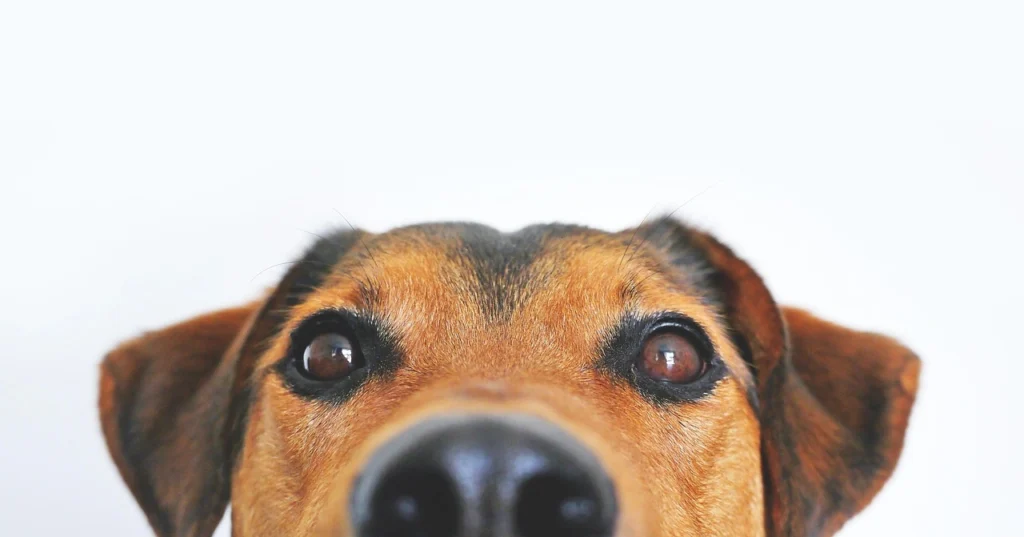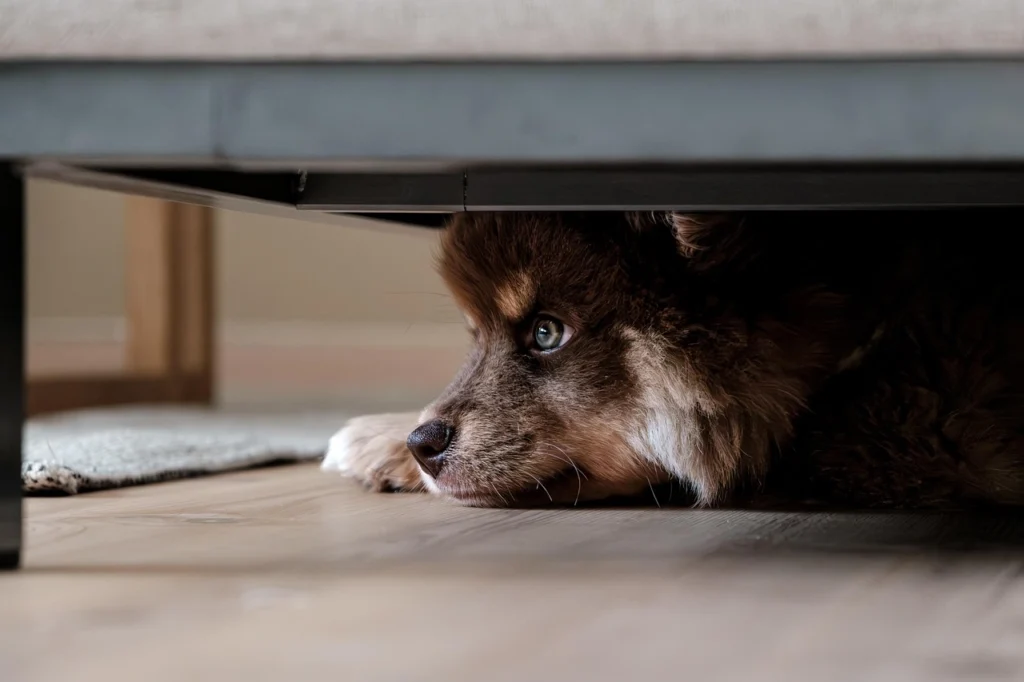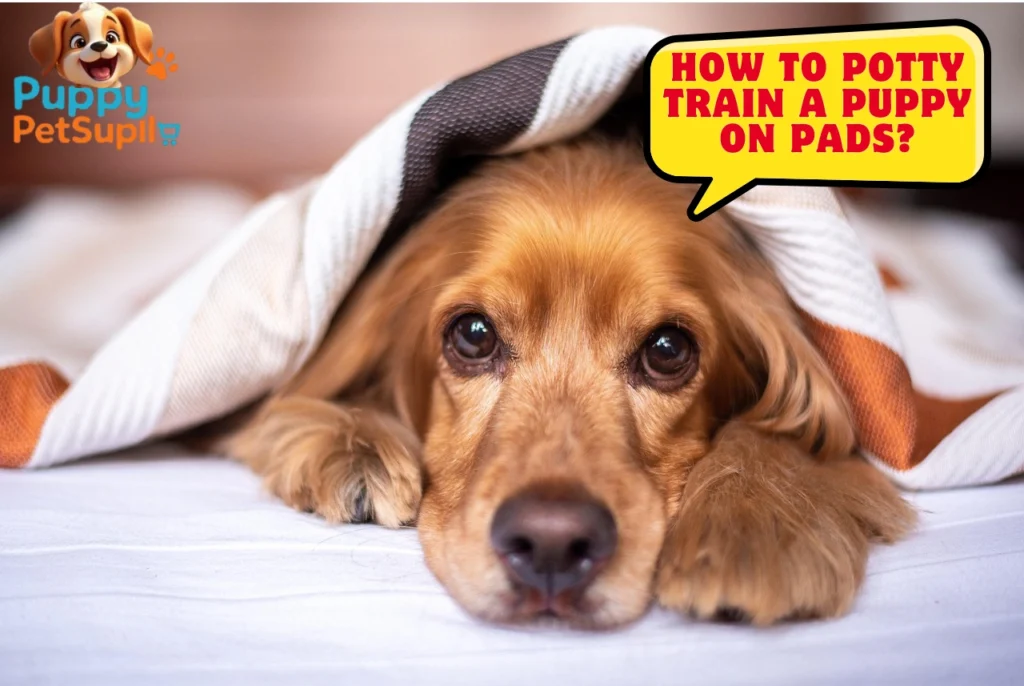How Puppy Potty Training on Pads? A Step-by-Step Guide
Potty training a puppy is key to their growth, teaching them habits for life. Nearly 80% of puppy owners struggle with potty training. Using pads can help, great for apartment dwellers or those with little outdoor space.
How to potty train a puppy on pads
With patience and consistency, puppy potty training on pads is doable. This guide will show you how to train your puppy to use pee pads. You’ll get tips and learn how to handle common problems.
Key Takeaways
- Understand the basics of puppy potty training
- Learn how to introduce your puppy to pee pads
- Discover tips for successful potty training
- Troubleshoot common potty training challenges
- Establish a routine for long-term success
Understanding Puppy Pad Training Basics
As a dog owner, knowing the basics of puppy pad training is key. It helps keep your home clean and comfy. Puppy pad training lets your dog go potty in a special area. This is great for indoor pet care.
Benefits of Using Potty Pads for Puppies
Using potty pads for puppies has many perks. They’re convenient, cut down on accidents, and keep your home clean. Puppy pads give a dog a place to go potty at home. This is super helpful for busy owners or those living in apartments.
They also help prevent accidents in other parts of the house. Puppy pads are made to soak up messes and cut down on smells. You can pick the right size and type for your puppy’s needs.

A bright, airy room with natural light streaming in through large windows. In the foreground, a cozy puppy lounges on a soft, absorbent puppy pad, its fluffy fur catching the warm glow. The pad is placed on a clean, tiled floor, creating a sense of order and cleanliness. In the middle ground, a sturdy puppy training gate stands, indicating a designated potty area. The background features simple, neutral-toned furnishings, allowing the puppy and its training setup to be the central focus. The scene conveys a sense of patience, guidance, and the early stages of a puppy’s journey towards reliable potty training.
When Pad Training Makes Sense
Pad training is smart in many situations. It’s good when you’re away for a long time or in bad weather. It’s also great for puppies learning to go potty outside or older dogs with mobility issues.
It’s also useful at the start of housebreaking. It gives your puppy a safe place to learn good potty habits. Using puppy pads can make potty training easier for you and your dog.
Preparing for Success: Essential Supplies
Getting ready for puppy pad training is all about the right supplies and a good training area. The right gear and a special spot make training easier.
Choosing the Right Puppy Pads
Choosing the right puppy training pads is key. Look for pads that soak up a lot to avoid messes. Some have sticky strips to stay in place. Think about your puppy’s size and how often they’ll use them when choosing puppy pads.
Here’s a table comparing popular puppy pad brands:
| Brand | Absorbency | Adhesive Strips | Price |
| Brand A | High | Yes | $15 |
| Brand B | Medium | No | $10 |
| Brand C | High | Yes | $18 |
Setting Up Your Training Area
Having a special spot for puppy pad training helps with routine. Pick a quiet, easy-to-get-to area that’s big enough for your puppy. Use sticky tabs or tape to keep the pad in place, as suggested in a training tip.

A stack of soft, absorbent puppy training pads arranged neatly on a clean, wooden surface. The pads are pristine white, with a subtle textured pattern. Warm, diffused lighting from above casts a gentle glow, highlighting the pads’ plush, cushiony appearance. The composition is balanced, with the pads taking up the majority of the frame, conveying a sense of preparedness and organization. The background is blurred, allowing the pads to be the focal point, emphasizing their importance as an essential supply for successful puppy potty training.
Additional Helpful Tools
Other puppy potty training supplies can help too. You’ll need a crate, treats, and cleaning stuff for accidents. Having these ready makes training smoother.
How to Potty Train a Puppy on Pads: The Core Method
Training your puppy to use potty pads is a mix of scheduling, introducing them to the pads, and using positive reinforcement. A structured approach helps your puppy learn to use the pads right and cut down on accidents.
Establishing a Consistent Schedule
Keeping a regular housetraining schedule is key to success. Puppies have small bladders and water passes through them quickly. Take your puppy to the potty pad at the same times each day, like after meals and naps. This routine helps your puppy know when it’s time to go.
Introducing Your Puppy to the Pads
Start by placing the potty pads in a special area when introducing your puppy. Encourage them to explore and get used to the pads. Place your puppy on the pad after meals or playtime to help them associate it with going to the bathroom.
Positive Reinforcement Techniques
Positive reinforcement is a strong tool in potty training. When your puppy uses the pad correctly, praise them, give treats, and show affection. This makes your puppy want to keep using the pad because they get positive feedback.
Supervision and Confinement Strategies
Supervision and confinement are important during potty training. Always watch your puppy, and when you can’t, put them in a crate or a special area with pads. This prevents accidents and teaches your puppy to hold their bladder until they’re taken to the pad.
Recognizing and Responding to Potty Signals
Knowing your puppy’s pre-potty behaviors is key to quick and effective responses. Every puppy is unique, so it’s important to understand their signals for successful potty training.
Common Pre-Potty Behaviors
Puppies show specific signs when they need to go. These include sniffing, circling, or squatting. By watching your puppy closely, you can learn these signs and act fast.
- Sniffing the floor or a particular area
- Circling or making a “potty turn”
- Squatting or lowering their bottom
- Whining or making other distress sounds
Quick Response Strategies
After spotting your puppy’s pre-potty signs, it’s vital to act quickly. Here are some strategies to help:
| Response Strategy | Description | Benefit |
| Quickly take the puppy to the pad | Move swiftly to the designated potty area | Reduces accidents and reinforces good behavior |
| Use a consistent command | Choose a specific command like “go potty” | Helps the puppy associate the command with the action |
| Praise and reward | Praise and reward the puppy when they use the pad correctly | Encourages good behavior and speeds up learning |
By recognizing your puppy’s potty signals and responding quickly, you can greatly reduce accidents. This makes the training smoother and faster.
Nighttime and Extended Absence Pad Training
Training your puppy at night and during extended absences can be tough. You need a good plan to keep your puppy on track. It’s key to adjust your training for these times.
Setting Up for Overnight Success
To help your puppy sleep through the night, limit their water a few hours before bed. Take them to the pad right before you sleep. Having a consistent bedtime routine helps your puppy know it’s time to sleep.
- Reduce water intake before bedtime to minimize the need for nighttime potty breaks.
- Take your puppy to the pad immediately before you go to sleep.
- Use a consistent command or signal to help your puppy associate the action with the need to go.
Experts say nighttime potty training is hard because puppies have small bladders. Being prepared is key. A potty area near your bedroom helps you quickly meet your puppy’s nighttime needs.
Managing Longer Periods Away from Home
When you’re away, planning for your puppy’s potty needs is important. Using a larger or more absorbent pad helps. You might also think about automated puppy pad systems for when you’re not there.
- Increase the size or absorbency of the puppy pad to accommodate longer periods.
- Consider automated systems that can help manage potty breaks.
- Ask a trusted neighbor or friend to check in on your puppy, or hire a pet sitter.
With these strategies, your puppy’s training can stay on track even when you’re away. It’s all about being ready for the challenges of puppy care.
Troubleshooting Common Pad Training Challenges
Pad training can sometimes face obstacles, but with the right approach, you can tackle these issues. Training a puppy to use a pad requires patience, persistence, and understanding their needs.
Dealing with Accidents Effectively
Accidents are a normal part of potty training. If your puppy has an accident, don’t scold or punish them. Clean up the mess quietly and keep a closer eye on your puppy to prevent future accidents.
Creating a consistent schedule for feeding, play, and potty breaks helps. This routine teaches your puppy when it’s time to go, reducing accidents.
Addressing Pad Chewing or Playing
Some puppies see the potty pad as a toy, leading to chewing or play. Make sure your puppy has plenty of toys and keep the potty area free from distractions. If your puppy starts chewing or playing with the pad, gently guide them to a toy.
Overcoming Pad Avoidance
If your puppy avoids the potty pad, it might be due to the pad’s location, size, or type. Try different pad sizes or types to see what your puppy likes. Also, make sure the potty area is quiet, easy to get to, and free from distractions.
By understanding and addressing these common challenges, you can make pad training smoother and more effective for you and your puppy.
Conclusion
As we wrap up this guide on puppy potty training on pads, remember the main points. It’s all about patience and sticking to a routine. By following the steps in this article, you can teach your puppy to use potty pads.
Key tips include setting a regular schedule, introducing the pads, and using positive rewards. Paying attention to your puppy’s signals helps avoid accidents and encourages good habits.
Keep in mind, with time and effort, most dogs can master using the pads. Stay dedicated to training and be ready to adjust your approach as needed.
By sticking to the best practices for pad training, you’ll have a successful potty training journey. Stay committed, and your puppy will learn to use the pads in no time.
FAQ
What are the benefits of using puppy pads for potty training?
Puppy pads make potty training easy and clean. They’re great for apartment dwellers or those with little outdoor space. They’re also convenient and mess-free.
How do I choose the right puppy pads for my puppy?
Look for pads that absorb well, fit your puppy’s size, and control odors. Choose ones with a leak-proof layer and a dry surface for your puppy’s comfort.
How often should I change my puppy’s potty pads?
Change the pads often to avoid bad smells and bacteria. Do it at least once a day. Change them more if your puppy uses them a lot.
How can I encourage my puppy to use the potty pads?
Stick to a routine and place your puppy on the pad after meals and play. Use praise and treats when they use it right.
What if my puppy doesn’t like using the potty pads?
Try different locations or types of pads if your puppy is hesitant. Place them on the pad after meals or play to help them associate it with good things.
Can I use puppy pads for nighttime potty training?
Yes, use them at night too. Put a pad in your puppy’s sleeping area or near their crate to help them go there at night.
How long does it take to potty train a puppy on pads?
Training time varies by puppy age, breed, and personality. With patience and positive rewards, most puppies learn in a few weeks to months.
What are some common challenges with pad training, and how can I overcome them?
Challenges include accidents, chewing, and avoiding the pad. Stay patient and consistent. Use positive rewards. Try different pads or locations to help your puppy use them right.

